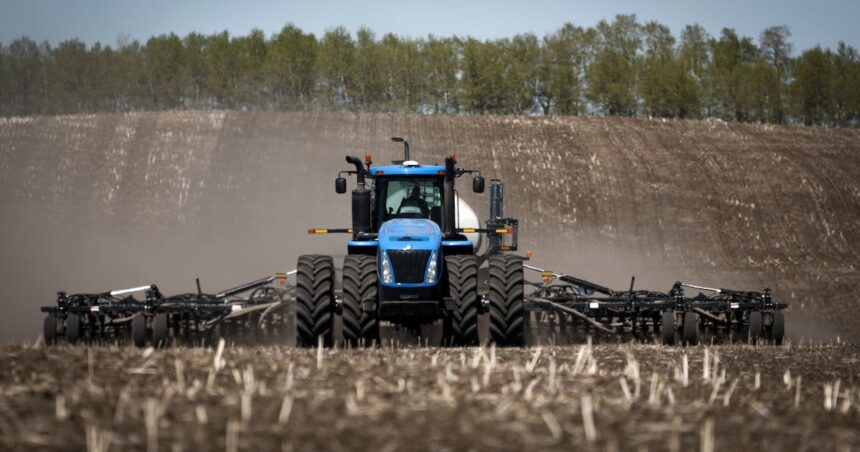The golden fields of Canada’s Prairie provinces, traditionally a symbol of agricultural abundance, are facing a precarious future as persistent drought conditions threaten this year’s wheat and canola harvests. What began as an optimistic growing season has evolved into a race against time as farmers across Saskatchewan, Alberta, and Manitoba anxiously scan clear skies for signs of much-needed rainfall.
“We’re at a critical juncture right now,” explains Warren Sekulic, who farms 5,000 acres near Rycroft in northern Alberta. “If we don’t get meaningful precipitation in the next two weeks, we could be looking at significantly reduced yields across all our crops.” Sekulic’s concerns echo throughout Canada’s breadbasket, where agricultural operations large and small face similar challenges.
The most recent crop report from Statistics Canada reveals a troubling picture. While early seeding conditions appeared favorable, with soil moisture adequate in many regions, the subsequent weeks have brought relentless heat and minimal precipitation. Agricultural meteorologists now warn that subsoil moisture reserves—crucial for sustaining crops through dry periods—are rapidly depleting across vast swathes of the Prairies.
Saskatchewan, which typically produces nearly half of Canada’s wheat and canola, has been particularly hard hit. The province’s agriculture ministry reports that topsoil moisture conditions are rated as “short” or “very short” in over 70 percent of crop-growing regions. Similar conditions prevail in much of Alberta and parts of Manitoba.
The implications extend far beyond individual farm operations. Canada ranks among the world’s top exporters of both wheat and canola, with global markets closely monitoring production forecasts. Commodity analysts are already factoring potential shortfalls into price projections, with futures contracts for both crops showing upward pressure in recent trading sessions.
“We’re looking at a situation where global wheat stocks are already tight,” notes Marlene Boersch, managing partner at Mercantile Consulting Venture. “Any significant reduction in Canadian output could have ripple effects across international markets, potentially driving prices higher for food manufacturers and ultimately consumers.”
The Canadian Wheat Board is maintaining cautious optimism, noting that modern farming techniques have improved drought resilience compared to previous decades. Advanced seed varieties, conservation tillage practices, and precision agriculture have all contributed to crops’ ability to withstand moisture stress. Nevertheless, even these technological advances have their limits.
For canola growers, the situation appears equally concerning. Chuck Fossay, president of the Manitoba Canola Growers Association, describes the current conditions as “touch and go” across much of his province. “Canola is particularly sensitive during the flowering stage,” Fossay explains. “Without adequate moisture now, we could see significant impacts on pod development and ultimately seed production.”
The economic stakes are substantial. Agriculture contributes approximately $111 billion annually to Canada’s GDP, with wheat and canola representing two of the country’s most valuable crops. Rural communities across the Prairies depend heavily on the success of each growing season, with ripple effects extending to transportation, processing, and export sectors.
Federal and provincial governments are monitoring the situation closely, with contingency plans for agricultural support programs should conditions deteriorate further. However, most farmers acknowledge that no support program can fully replace a successful harvest.
“The challenge with agriculture is that we’re always at the mercy of factors beyond our control,” reflects Sekulic. “You can do everything right—use the best seeds, apply fertilizer perfectly, time your operations—but without rain, none of that matters much.”
As Canada faces this agricultural challenge, a broader question emerges: How will our nation’s food production systems adapt to increasingly unpredictable climate patterns in the coming decades? For now, Prairie farmers continue their anxious skyward glances, hoping relief arrives before their crops reach the point of no return.























